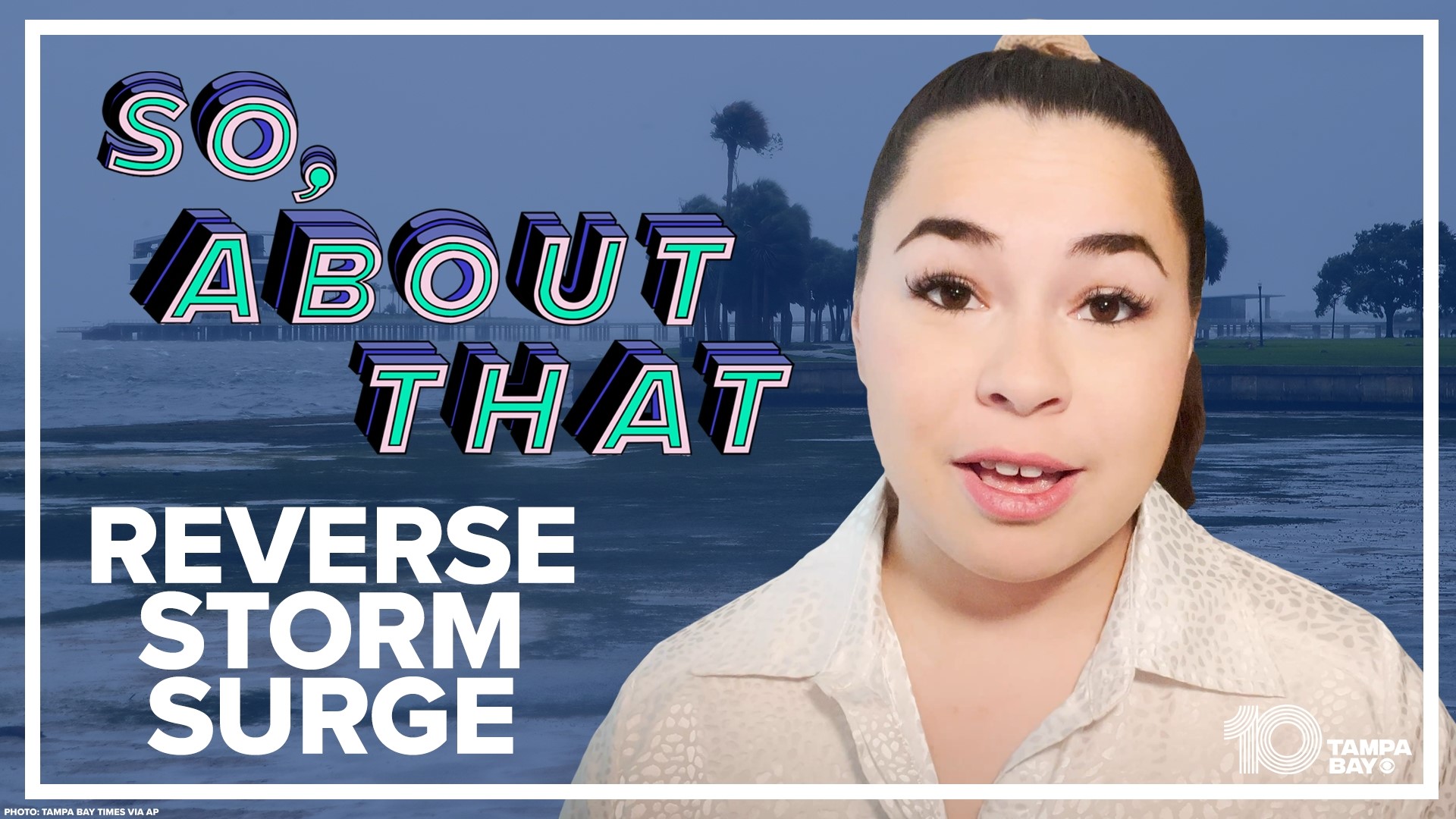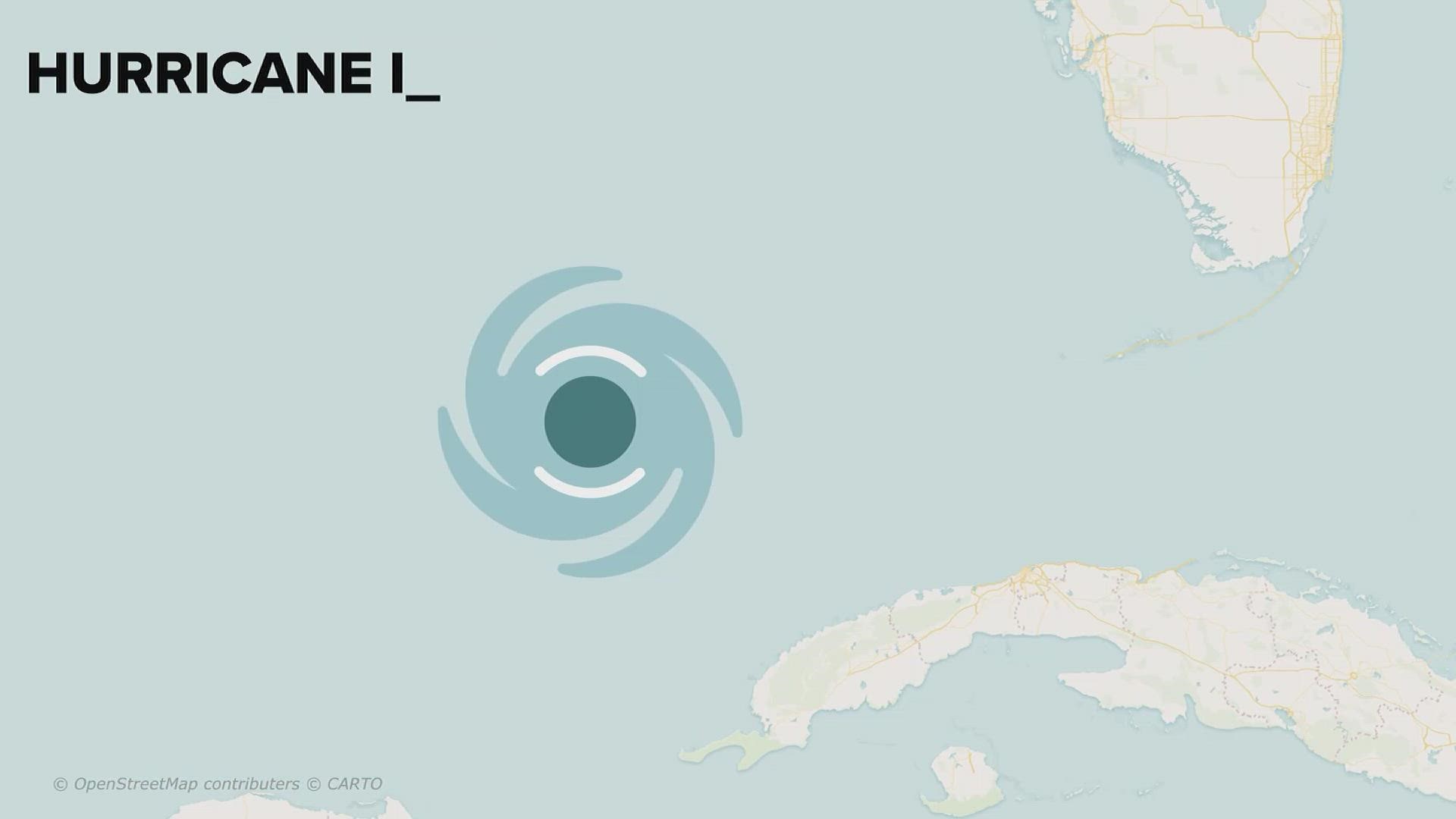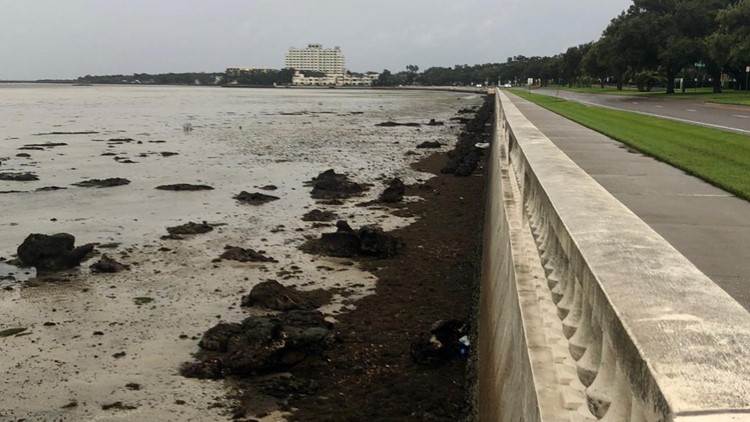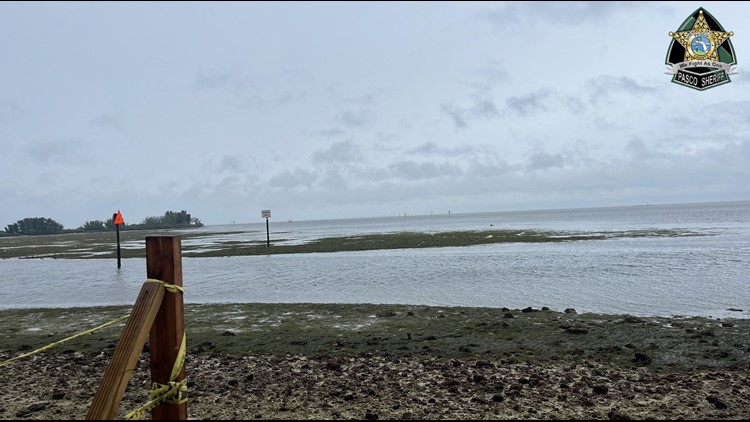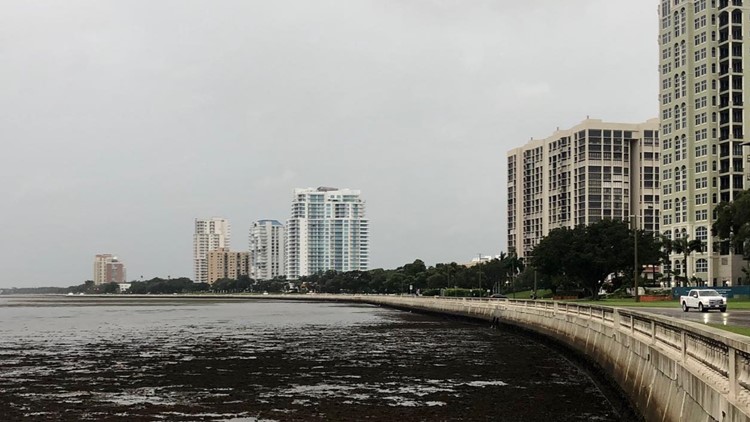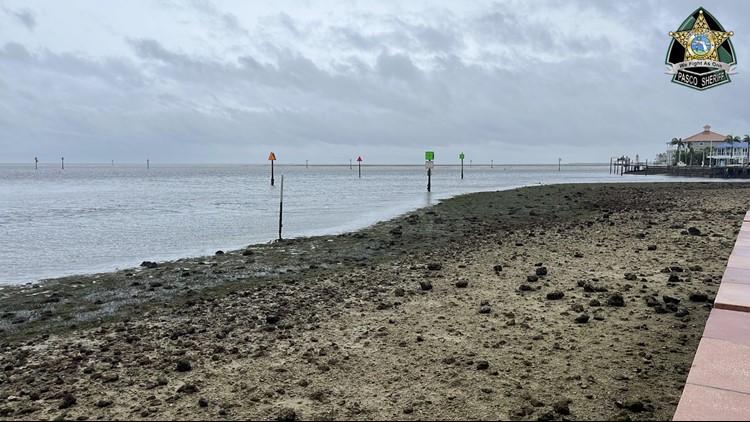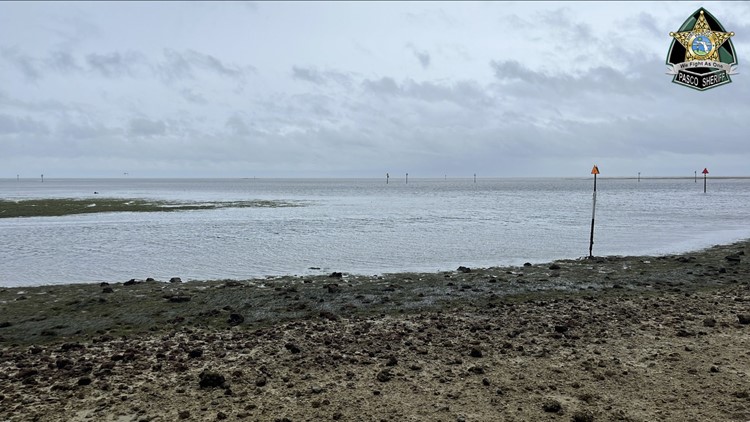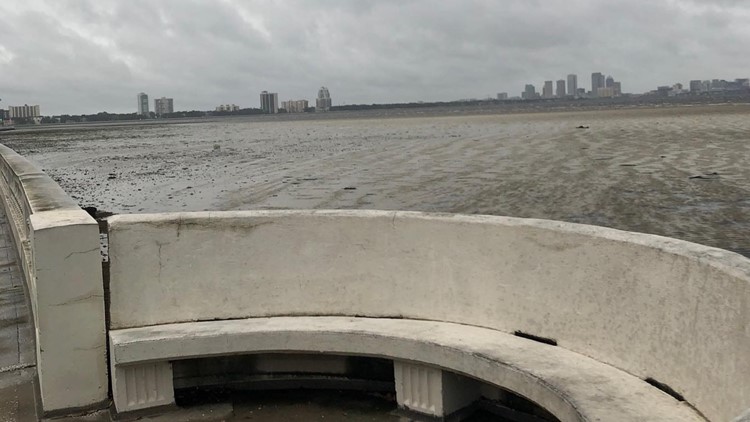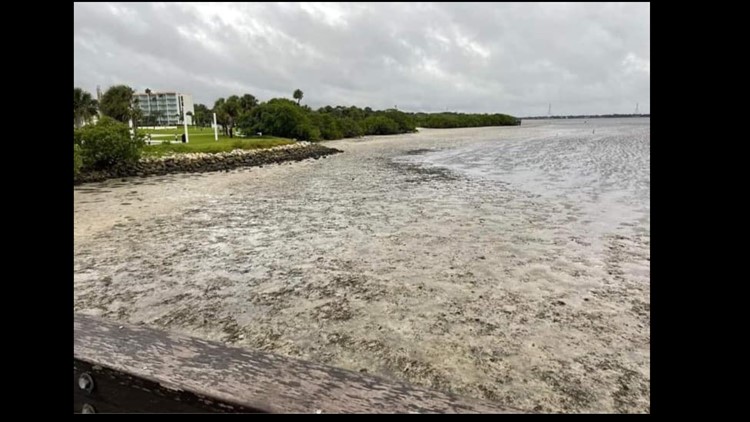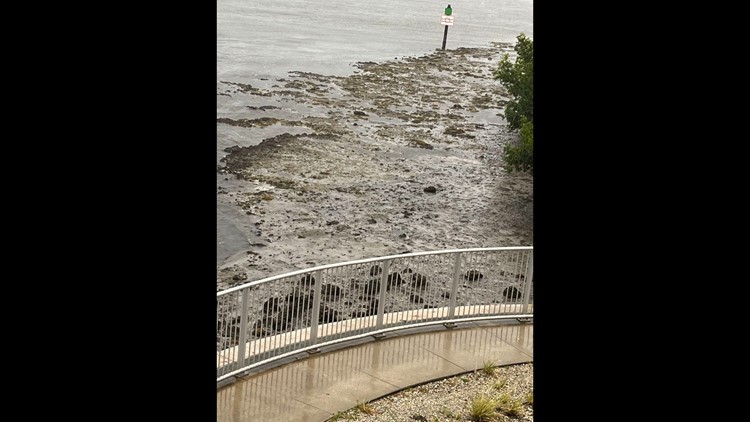TAMPA, Fla. — For days ahead of the hurricane, the Tampa Bay area was making preparations, fully expecting the storm to leave catastrophic damage to our community.
But as the storm shifted south in the days leading up to it hitting Florida’s coast, the Tampa Bay area saw something that many people were not expecting to see. What could have been a 12-foot storm surge turned into water literally being pulled out of the bay, a sight many people have never seen.
When the storm shifted track, we started to see videos like the one below, of a man riding his bike onto Tampa Bay.
The storm was originally predicted to make an almost direct hit on Tampa Bay as a major hurricane – that’s Category 3 or higher – spinning counter-clockwise with winds reaching 155 mph, just 2 mph short of being considered a Category 5 hurricane.
As this storm was heading toward us, it would be spinning in a direction that would cause tons and tons of water to be pushed into the bay, filling it up like a big bowl.
But as the storm started to head south toward the Fort Myers area, we saw quite the opposite of what was expected to happen in Tampa Bay.
The direction of the storm, its angle to the coastline, its counterclockwise spin, and strong winds actually meant that water would be pulled out of the bay in what is known as a reverse storm surge.
he bay is already pretty shallow with an average depth of 11 feet. The National Oceanic and Atmospheric Administration, or NOAA, observed water levels dropping by as much as 6 feet in St. Pete!
PHOTOS: 'Reverse storm surge' seen in Tampa Bay area
And with all that water pushed out, there were many people checking out the unusual sight, walking directly onto the bay floor. This, though, can be extremely dangerous. After the reverse surge, Florida’s Division of Emergency Management put out this tweet:
Experts say once that wind changes direction, it could cause the water to come rushing back in over the course of a few hours (potentially causing a storm surge) and could catch someone off guard.
While this reverse surge seems unusual, it’s not the first time this has happened to Tampa Bay. In 2017, water also receded during Hurricane Irma, but experts warn this won’t happen every time a hurricane is predicted to hit our community.
In this situation though, that reverse storm surge contributed to the area being largely spared from the devastating impacts we now see in places like Fort Myers. However, we may not be as lucky next time, so it is important always to follow evacuation orders and monitor the path of hurricanes.
If you or someone you know has been impacted by Hurricane Ian, you can find resources for assistance below.
Do you ever have any questions about the Tampa Bay area, or maybe just why things are the way they are? You can connect with Katie at mjones@10tampabay.com or on Twitter.

